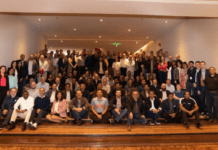Companies have been talking and literally bragging about all that they have done or are doing for their employees’ mental health during and post pandemic. Many international and Indian tech startups came forward to give occasional days off and short breaks to employees when they sensed a burnout. But what exactly is burnout and how do companies really measure the burnout in employees?
What is burnout?
The term, ‘burnout’ was coined in the 1970s by a psychologist named Herbert Freudenberg. He defined this as a condition where a person is very exhausted, physically, emotionally and mentally.
Measuring burnout
Christina Maslach, a professor at the University of California did major research in the area of employee burnout during the 1970s and 80s. That is how, the Maslach Burnout Inventory was born — a tool that helps measure employee burnout. Maslach also redefined ‘burnout’. Unlike Freudenberg, she defined it as a stage where an employee is exhausted from working, cynical about the workplace and feels no professional growth.
With certain sets of questions, people are rated on a scale of more positive to more negative to measure these three parametres. Many researchers trying to understand or measure burnout in people use this tool especially to measure people working in the healthcare and medical professions such as doctors and nurses. Therefore, according to Maslach, people experience burnout, when they are more negative on all three parameteres.
“One-on-one conversations with employees is the only way to get insights on stress, anxiety and burnout. It cannot be measured with any tool”
Sriram V, CHRO, Bankbazaar.com
But companies have their own ways to measure burnout in their employees.
Traditional methods: Monitoring of employee attendance and the number of hours they are clocking each day are some traditional ways in which companies measure or gauge employee burnout. Employee-engagement surveys are also a way for companies to measure burnout.
Checkups: Satyajit Mohanty, CHRO, Crompton Greaves Consumer Electricals, shares with HRKatha, how the company has recently started the campaign of getting a full body checkup done of all employees and tracking their mental and physical health. “This way, we plan to measure the burnout in employees,” says Mohanty.
EAPs: HRKatha also spoke to Sriram V, CHRO, Bankbazaar.com, who reveals that their employee assistance programme allows employees to consult psychologists and experts, in case they need any help. All the data is anonymous and is kept confidential between the consultant and the employee. However, the HR team can track the number of people enrolling with such services and for which problem they have consulted them, while the names and identities of the employees remain undisclosed or anonymous.
Tools & tech: There are tools to measure burnout, such as wearables, which can track the blood pressure, cholesterol levels and the heartbeat rate. Even AI-enabled technologies can predict the level of stress or anxiety from the mails and other written communications, by examining the usage of certain words and phrases.
Tracking of the time at which mails are sent or received or replied to also gives a clue. If there is too much mailing activity even at night, then it can be assumed that the employee is putting in extra hours.
“I think, rather than wasting time keeping track of burnout in employees, we should focus on doing something about it, as we all know that the employees are anyway stressed at work”
Satyajit Mohanty, CHRO, Crompton Greaves Consumer Electricals
Personal interactions: Despite the availability of such high-end technologies, many companies still follow the traditional ways of measurement, which are dependant on HRBP teams keeping a check on all the employees.
“One-on-one conversations with employees is the only way to get insights on stress, anxiety and burnout. It cannot be measured with any tool,” says Sriram.
“Technology can only help in testifying whether one was right or wrong,” adds Sriram.
Mohanty points out that such tools to measure mental health are quite expensive as well.
He also points out that one cannot be certain that the employees will believe in the data revealed by the technology.
“I think, rather than wasting time keeping track of burnout in employees, we should focus on doing something about it, as we all know that the employees are anyway stressed at work,” asserts Mohanty.
A study reveals that almost a third of the working Indian population is burnt out, due to the pandemic-induced situations. Keeping track of how employees are behaving should be an ongoing process, only then can it help organisations take appropriate corrective steps on time.
Value our content... contribute towards our growth. Even a small contribution a month would be of great help for us.
Since eight years, we have been serving the industry through daily news and stories. Our content is free for all and we plan to keep it that way.
Support HRKatha. Pay Here (All it takes is a minute)




































